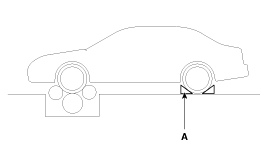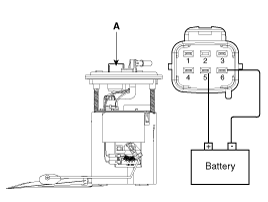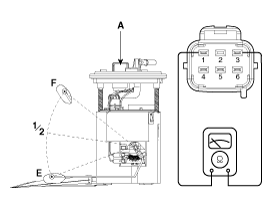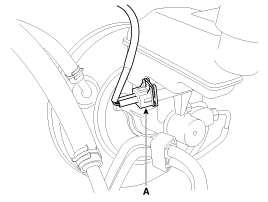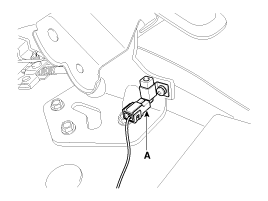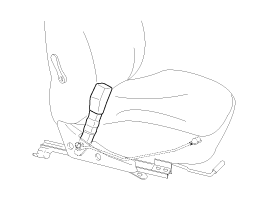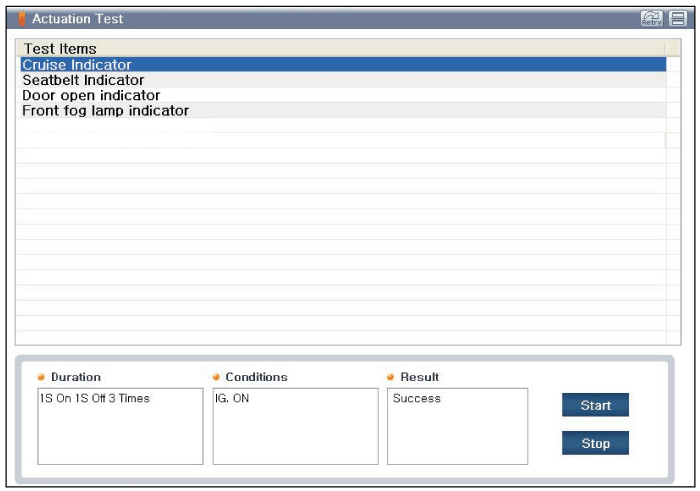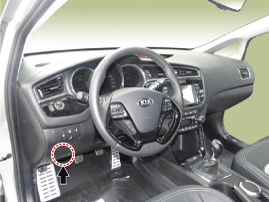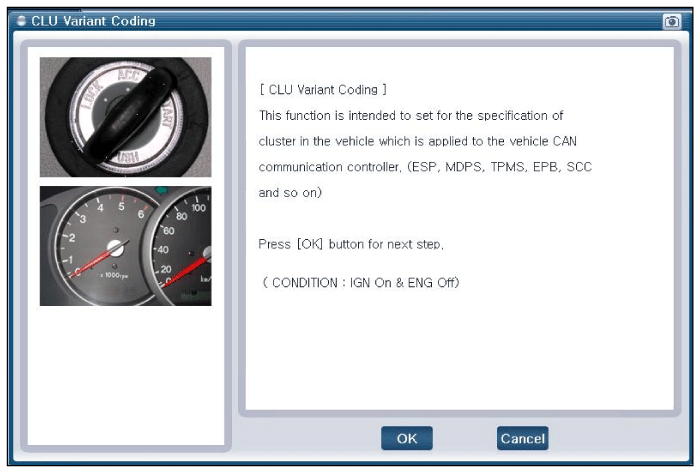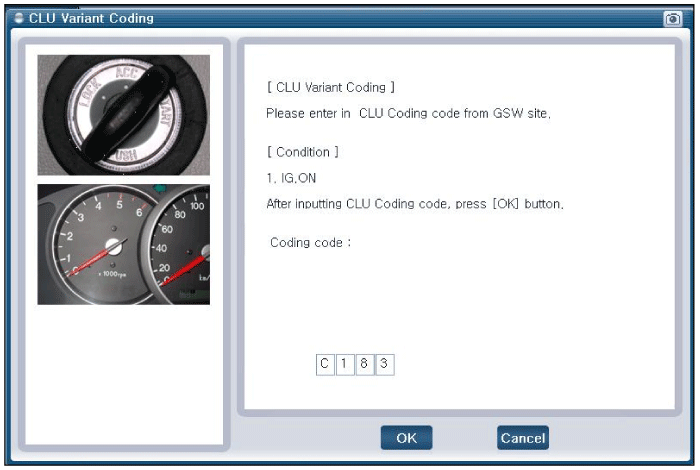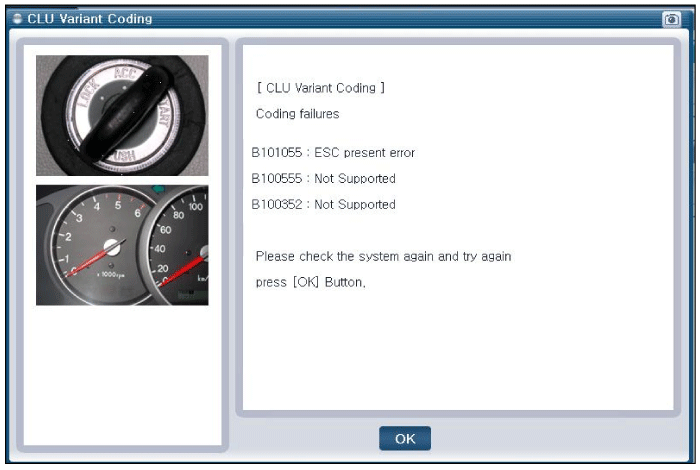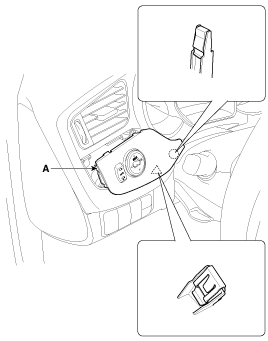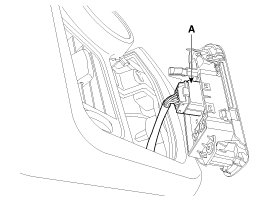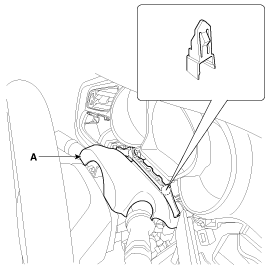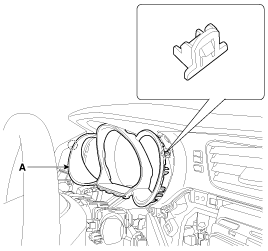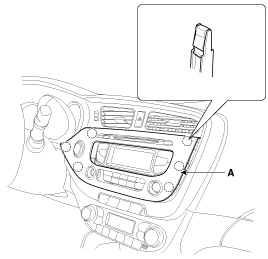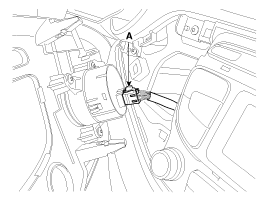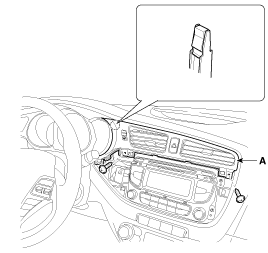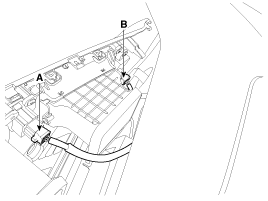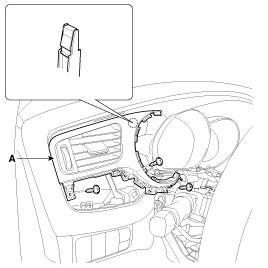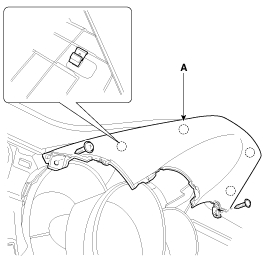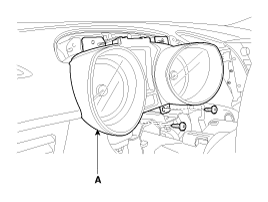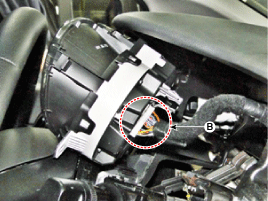Kia Cee'd: Indicators and Gauges / Instrument Cluster Repair procedures
Kia Cee'd JD Service Manual / Body Electrical System / Indicators and Gauges / Instrument Cluster Repair procedures
| Inspection |
Speedometer
| 1. |
Adjust the pressure of the tires to the specified level.
|
| 2. |
Drive the vehicle onto a speedometer tester. Use wheel chocks (A) as
appropriate.
|
| 3. |
Check if the speedometer indicator range is within the standard values.
[km/h]
[mph]
|
Tachometer
| 1. |
Connect the GDS to the diagnostic link connector or install a tachometer.
|
| 2. |
With the engine started, compare the readings of the tester with that
of the tachometer. Replace the tachometer if the tolerance is exceeded.
|
Fuel Gauge
| 1. |
Disconnect the fuel sender connector from the fuel sender.
|
| 2. |
Remove the fuel pump assembly.
|
| 3. |
Check motor operation by fuel pump connector (A) connecting power (No.4)
and ground (No.5).
|
Main Fuel Gauge Sender
| 1. |
Turn the ignition switch OFF, and then remove battery (-) cable.
|
| 2. |
Remove the fuel pump assembly.
|
| 3. |
Using an ohmmeter, measure the resistance between terminals 1 and 3
of sender connector (A) at each float level.
|
| 4. |
Also check that the resistance changes smoothly when the float is moved
from "E" to "F".
|
| 5. |
If the height resistance is unsatisfied, replace the fuel sender as
an assembly.
|
Brake Fluid Level Warning Switch
| 1. |
Remove the connector (A) from the switch located at the brake fluid
reservoir.
|
| 2. |
Verify that continuity exists between switch terminals 1 and 2 while
pressing the switch (float) down with a rod.
|
Brake Fluid Level Warning Lamp
| 1. |
Ignition "ON"
|
| 2. |
Release the parking brake.
|
| 3. |
Remove the connector from the brake fluid level warning switch.
|
| 4. |
Ground the connector at the harness side.
|
| 5. |
Verify that the warning lamp lights.
|
Parking Brake Switch
The parking brake switch (A) is a pulling type. It is located under the parking
brake lever. To adjust, move the switch mount up and down with the parking brake
lever released all the way.
| 1. |
Check that there is continuity between the terminal and switch body
with the switch ON (Lever is pulled).
|
| 2. |
Check that there is no continuity between the terminal and switch body
with the switch OFF (Lever is released).
If continuity is not as specified, replace the switch or inspect its
ground connection.
|
Door Switch
Remove the door switch and check for continuity between the terminals.
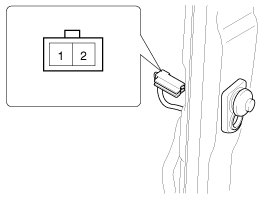

Seat Belt Switch
| 1. |
Remove the connector from the switch.
|
| 2. |
Check for continuity between terminals.
|
Seat Belt Warning Lamp
With the ignition switch turned ON, verify that the lamp glows.
|
Seat belt condition |
Warning lamp |
|
Fastened |
OFF |
|
Not fastened |
ON |
Diagnosis with GDS
| 1. |
It will be able to diagnose defects of CLU with GDS quickly. GDS can
operates actuator forcefully, input/output value monitoring and self
diagnosis.
|
| 2. |
Select model and "BCM".
|
| 3. |
Select the "Cluster Moduel" to check.
|
| 4. |
Select "Input/output monitoring", if you will check current data of
instrument cluster.
|
| 5. |
If you will check each module data operation forcefully, select "Actuation
test".
|
| 6. |
To check the DTC of the each module, select "DIAGNOSTIC TROUBLE CODES".
|
CLU Variant Coding
After replacing the cluster with a new one, must be performed the “Variant Coding”
procedure.
| 1. |
Connect the cable of GDS to the data link connector in driver side crash
pad lower panel, turn the power on GDS.
|
| 2. |
Select model and "BCM".
|
| 3. |
Select Variant coding mode to perform.
|
| 4. |
If the trouble codes occurred when performing variant coding, try the
CLU variant coding again after checking the installation status of CLU
system.
|
| Removal |
|
| 1. |
Disconnect the negative (-) battery terminal.
|
| 2. |
Using a screwdriver or remover, remove the crash pad garnish [LH] (A).
|
| 3. |
Disconnect the power door mirror switch connector (A).
|
| 4. |
Using a screwdriver or remover, remove the steering column upper shroud
panel (A).
|
| 5. |
Using a screwdriver or remover, remove the cluster fascia cylinder panel
(A).
|
| 6. |
Using a screwdriver or remover, remove the center fascia panel (A).
|
| 7. |
Disconnect the start/stop button connector (A).
|
| 8. |
After loosening the mounting screws, then remove the center airvent
duct (A).
|
| 9. |
Disconnect the hazard switch connector (A) and trip switch connector
(B).
|
| 10. |
After loosening the mounting screws, then remove the side airvent duct
[LH] (A).
|
| 11. |
After loosening the mounting screws, then remove the cluster fascia
upper panel (A).
|
| 12. |
Remove the cluster (A) after loosening screws and disconnecting a connector
(B).
|
| Installation |
| 1. |
Install the cluster to the crash pad.
|
| 2. |
Install the cluster fascia upper panel, side airvent duct [LH], crash
pad garnish [LH] and center airvent duct.
|
| 3. |
Install the cluster fascia cylinder panel, center fascia panel, shroud
panel and crash pad lower panel.
|
 Instrument Cluster Schematic diagrams
Instrument Cluster Schematic diagrams
Circuit Diagram
[Standard]
[Supervision]
...
 Power Door Locks
Power Door Locks
...
Other information:
Kia Cee'd JD Service Manual: Parking Brake Cable Repair procedures
Removal
The parking brake cables must not be bent or distorted. This will lead
to stiff operation and premature failure.
1.
Remove the floor console assembly.
(Refer t ...
Kia Cee'd JD Service Manual: Tail Gate Trim Repair procedures
Replacement
•
When prying with a flat-tip screwdriver, wrap it with protective
tape, and apply protective tape around the related parts, to
prevent damage.
...
© 2017-2025 www.kceed.com




